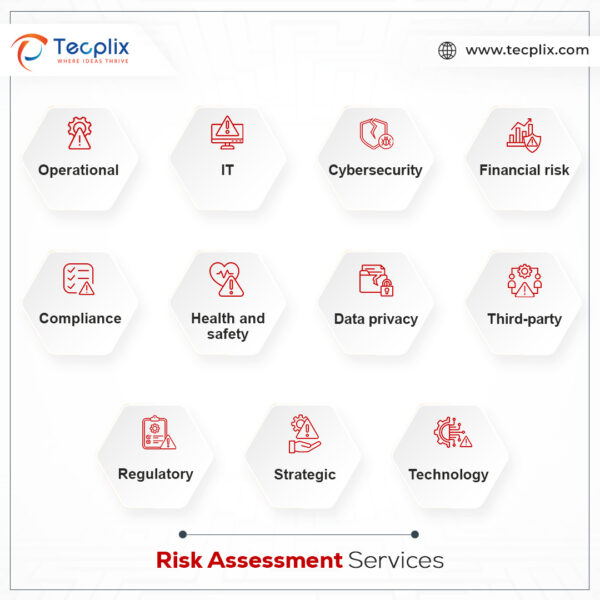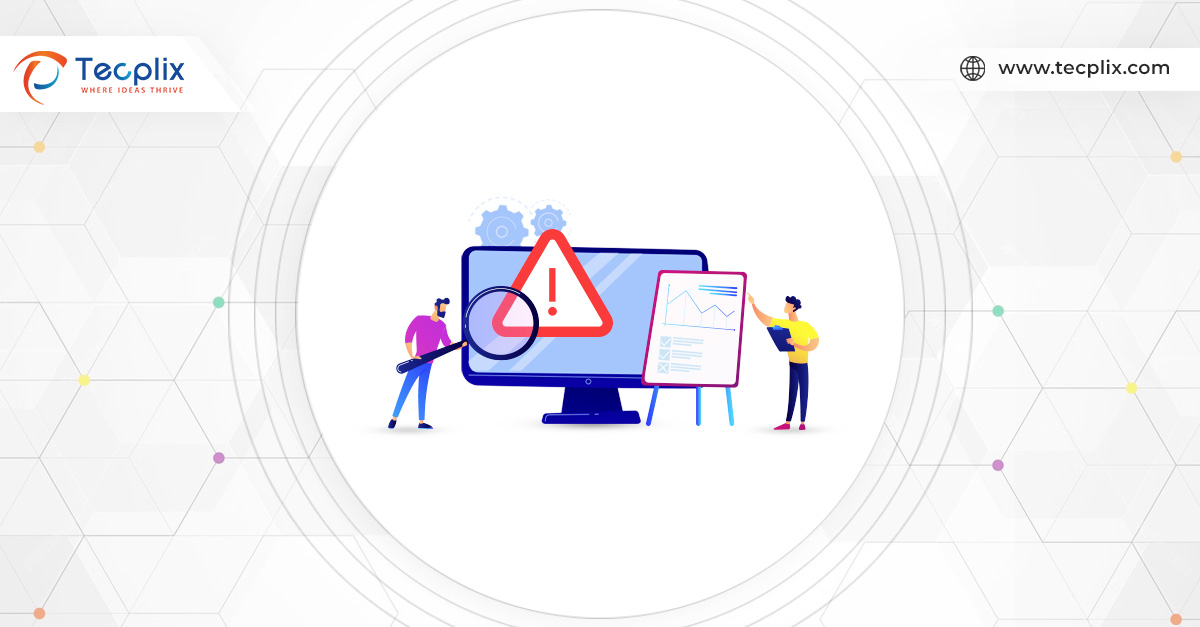In today’s unpredictable business environment, uncertainties pose significant threats to organizations. To defend themselves, companies need to conduct comprehensive risk assessments. These assessments serve as a precise searchlight, revealing potential risks such as cyber threats and economic downturns. Once organizations have identified these risks, they can allocate their resources strategically to address them before they become crises.
75% of organizations struggle to keep up with improving risk management practices. (PwC Pulse Survey)
Risk assessments help organizations make informed decisions and guide investments. It offers critical foresight, enabling streamlined operations and maximizing efficiency. A culture of calculated risk-taking fosters innovation, where potential pitfalls are identified and proactively addressed. Comprehensive risk assessments are not mere checkboxes on a compliance list; they form the foundation of organizational resilience, paving the way for sustainable success in an ever-changing world. A well-executed risk assessment helps businesses understand their vulnerabilities, prioritize risks, and develop effective risk management strategies. In this blog post, we will guide you through the process of conducting a comprehensive risk assessment for your organization.
How to Conduct a Comprehensive Risk Assessment
1. Define the Scope: Start by clearly defining the scope of your risk assessment. Identify the areas, processes, and assets that need to be assessed. This could include operational risks, financial risks, information security risks, regulatory compliance risks, and more.
2. Identify Potential Risks: Next, brainstorm and identify potential risks that could impact your organization. This can be done through various methods such as interviews, workshops, and reviewing historical data. Consider both internal and external factors that could pose risks to your organization.
3. Assess Likelihood and Impact: Once you have identified potential risks, assess their likelihood of occurring and their possible impact on your organization. Use a risk matrix or scoring system to categorize risks based on their likelihood and impact levels. This will help prioritize risks and allocate resources accordingly.
4. Evaluate Existing Controls: Evaluate the effectiveness of existing controls in place to mitigate identified risks. Determine if the controls are adequate, properly implemented, and monitored. Identify any gaps or weaknesses in the controls that need to be addressed.
5. Analyze Risk Interdependencies: Consider the interdependencies between different risks. Some risks may be interconnected, meaning that the occurrence of one risk could trigger or exacerbate others. Analyzing these interdependencies will help you understand the broader impact of risks and develop holistic risk management strategies.
6. Mitigation Strategies: Based on the risk assessment findings, develop and prioritize mitigation strategies. These strategies should aim to reduce the likelihood or impact of identified risks. Consider a combination of preventive, detective, and corrective controls to manage risks effectively.
7. Implement and Monitor: Implement the identified mitigation strategies and continuously monitor their effectiveness. Regularly review and update your risk assessment to account for changes in your organization’s environment, new risks, or changes in risk levels.
8. Communication and Training: Ensure effective communication of the risk assessment findings and mitigation strategies to relevant stakeholders in your organization. Provide training and awareness programs to employees to promote a risk-aware culture and ensure their involvement in risk management efforts.
Benefits of Comprehensive Risk Assessment
1. Compliance with Regulations
• Reduced fines and penalties: By proactively identifying and mitigating risks, customers can avoid violating regulations, saving substantial financial penalties and legal fees.
• Faster approvals: Demonstrating a strong risk management system can expedite approvals from regulatory bodies, streamlining business operations.
• Enhanced reputation: Publicly showing commitment to compliance fosters trust and strengthens brand image, potentially attracting new customers and investors.
2. Better Service Delivery
• Reduced service disruptions: Proactive risk identification minimizes operational hiccups and service interruptions, leading to smoother customer experiences.
• Improved responsiveness: Anticipating potential issues allows proactive solutions to be developed, enabling quicker responses to customer needs and concerns.
• Personalized service: Understanding customer risk profiles enables tailoring services and support to specific needs, enhancing customer satisfaction and loyalty.
3. Competitive Advantage
• Risk-based pricing: Offering competitive pricing based on assessed risk profiles can attract new customers and retain existing ones.
• Increased efficiency: Streamlined risk management reduces operational costs, freeing up resources for innovation and market differentiation.
• Improved decision-making: Data-driven risk insights support strategic decisions, paving the way for calculated and successful ventures.
4. Improved Decision Making
• Informed investments: Risk assessments guide investments towards low-risk, high-reward opportunities, maximizing returns and minimizing losses.
• Strategic partnerships: Assessing potential partners’ risks helps choose reliable collaborators, boosting the success rates of joint ventures.
• Data-driven insights: Risk data provides valuable insights into market trends and customer behavior, informing future business strategies.
5. Proactive Problem Solving
• Early detection of threats: Identifying potential issues before they impact customers allows for preventative measures and minimizes damage.
• Crisis preparedness: Risk assessments form the basis of robust contingency plans, enabling a swift and effective response to unforeseen events.
• Reduced resource strain: Proactive problem-solving minimizes the need for reactive solutions, freeing up resources for core business activities.
6. Long-Term Sustainability
• Reduced operational costs: Minimizing risks lowers insurance premiums, maintenance costs, and legal fees, contributing to long-term financial stability.
• Enhanced resilience: A proactive risk management culture fosters a company’s ability to adapt and thrive in dynamic markets, ensuring long-term success.
• Future-proofed operations: Continuous risk evaluation ensures ongoing compliance and preparedness, future-proofing the business against emerging threats.
Mitigate Potential Risks and Ensure Safety
In today’s dynamic business environment, navigating risk proactively is a necessity. Tecplix offers a comprehensive suite of risk assessment services designed to empower your organization with unmatched clarity, control, and confidence.
More than just assessments, we deliver:
• Industry-leading expertise: Our team of seasoned professionals possesses deep knowledge across various risk domains, ensuring tailored solutions that meet your specific needs.
• Holistic approach: We go beyond individual risks, providing a 360-degree view that identifies interconnected threats and opportunities.
• Actionable insights: Our assessments aren’t just reports; they’re roadmaps to resilience, packed with actionable recommendations and mitigation strategies.
• Technology-driven efficiency: We leverage cutting-edge tools and automation to streamline the assessment process, saving time and resources.
• Collaborative engagement: We work closely with you throughout the process, ensuring alignment with your organizational goals and risk appetite.
We cover every aspect of the risk landscape:

Tecplix Risk Assessment Services
• Operational: Identify and mitigate vulnerabilities in your core processes, ensuring smooth operations and business continuity.
• IT: Secure your technology infrastructure and data against cyber threats and system failures.
• Cybersecurity: Proactively identify and address cyber vulnerabilities, protecting your critical assets and reputation.
• Financial: Safeguard your financial stability by pinpointing potential financial risks and implementing effective controls.
• Compliance: Stay ahead of regulatory changes and ensure adherence to industry standards with our compliance risk assessments.
• Health and Safety: Prioritize the well-being of your employees and stakeholders by identifying and mitigating health and safety hazards.
• Data Privacy: Protect sensitive data and comply with evolving privacy regulations with our comprehensive data privacy risk assessments.
• Third-Party: Evaluate the risks associated with your vendors and partners, ensuring a secure and resilient supply chain.
• Regulatory: Anticipate and comply with regulatory changes, minimizing legal and financial risks.
• Strategic: Make informed decisions by identifying and addressing strategic risks that could impact your long-term goals.
• Technology: Ensure your technology investments align with your business objectives and mitigate technology-related risks.
Contact us today for a free consultation and discover how Tecplix can empower your organization to thrive in a risk-filled world.


